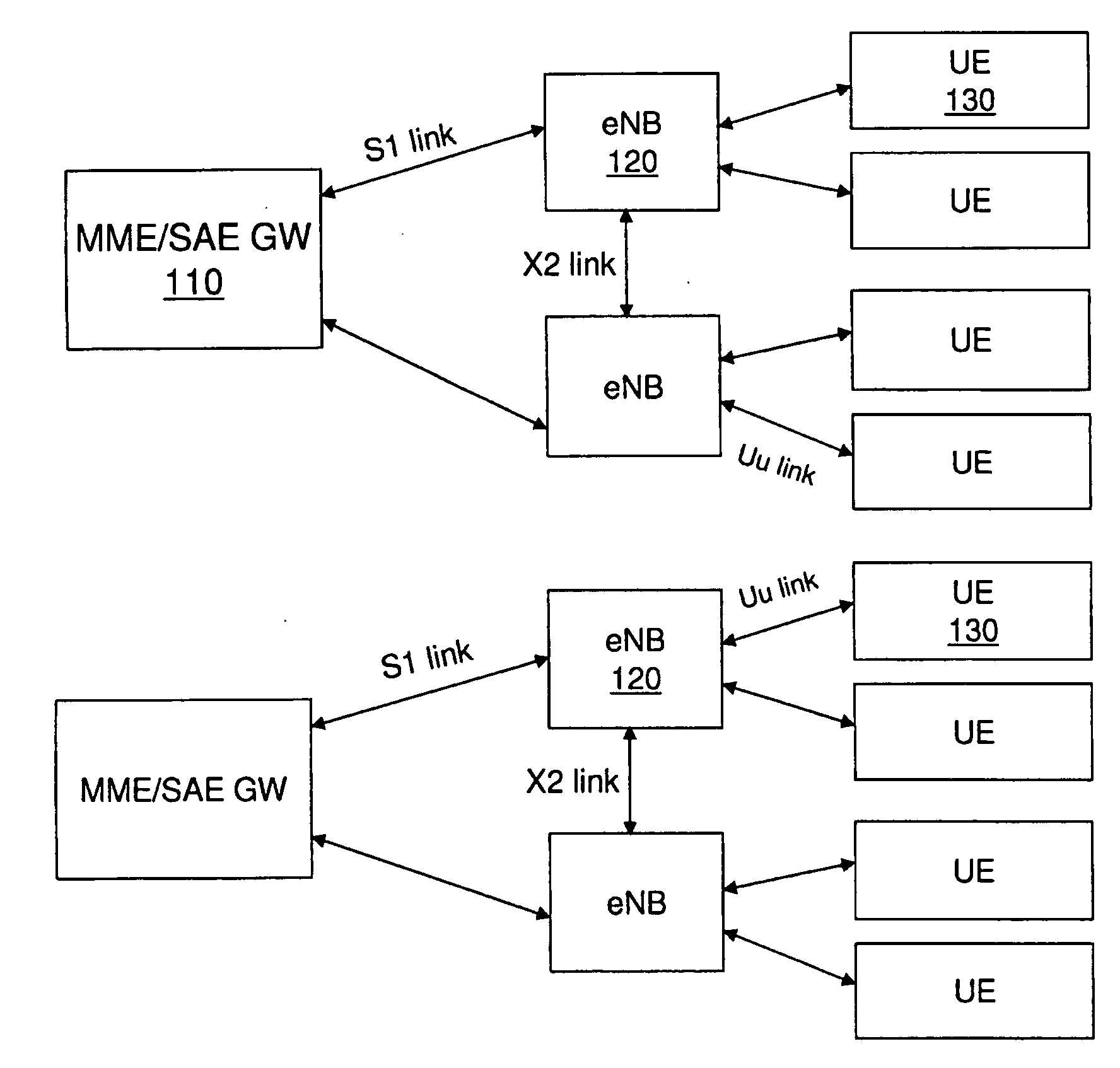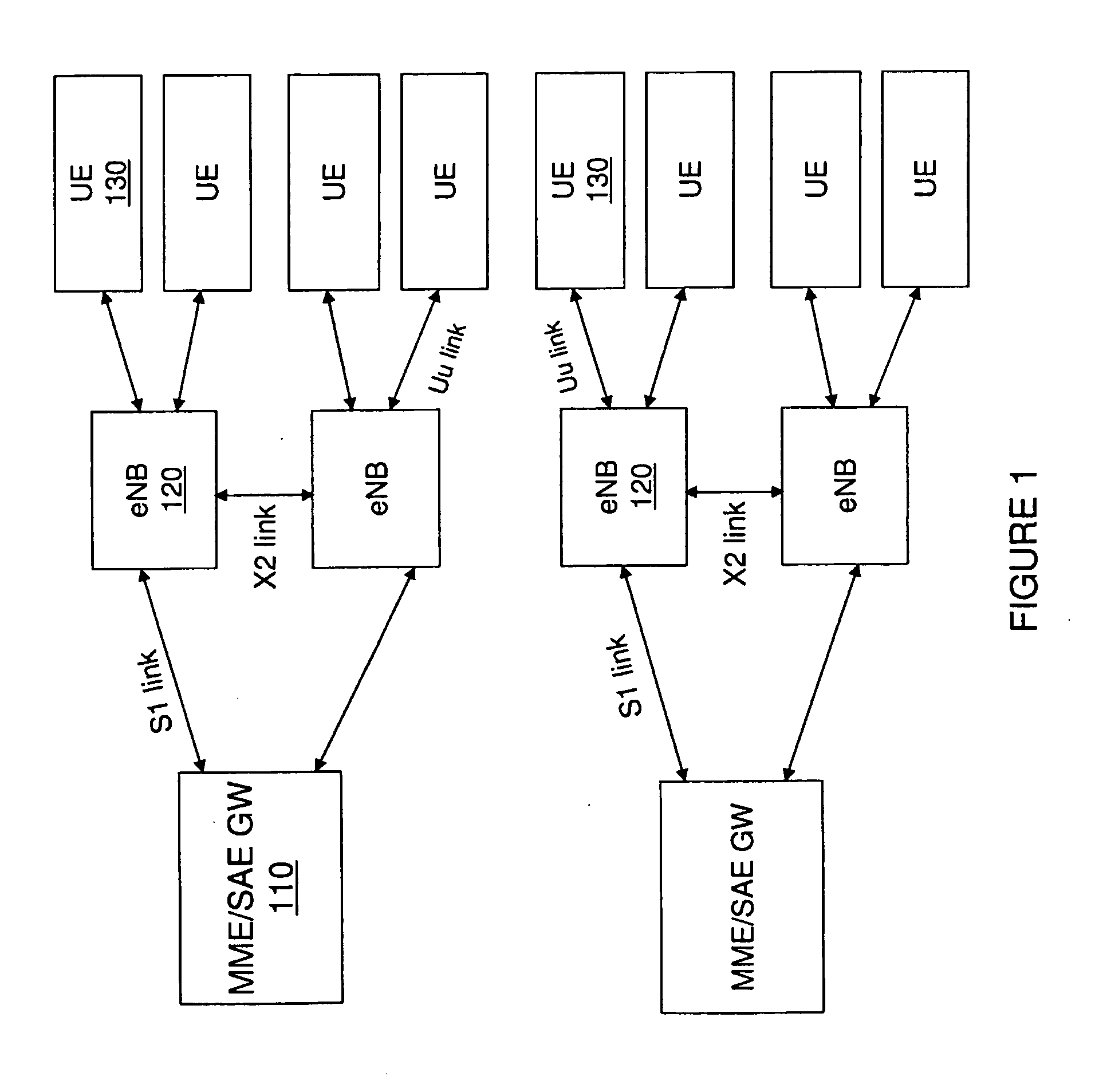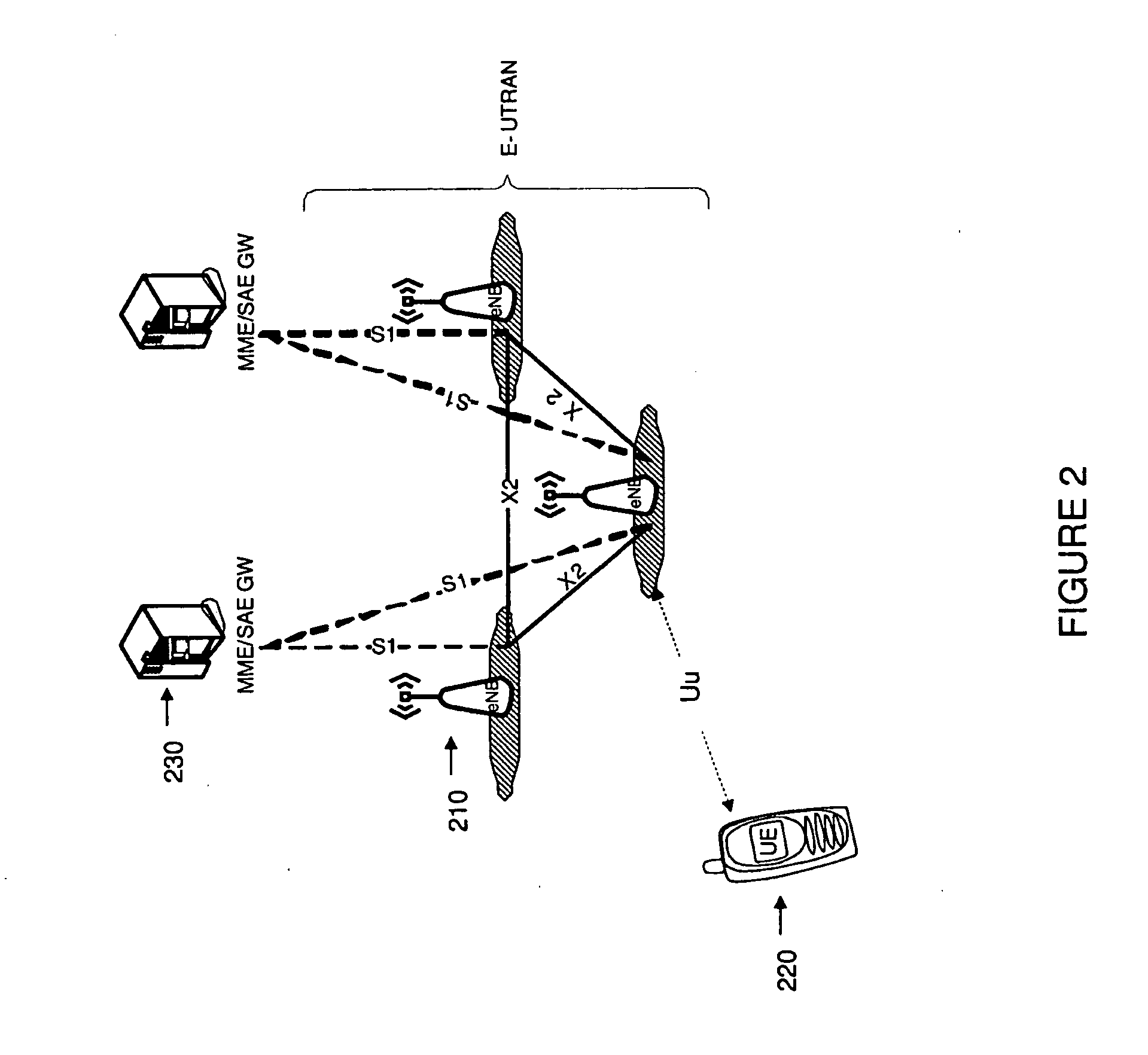Data indicator for persistently allocated packets in a communications system
a data indicator and communication system technology, applied in the field of communication systems, can solve the problem that pdcch is not available for wireless applications presently
- Summary
- Abstract
- Description
- Claims
- Application Information
AI Technical Summary
Benefits of technology
Problems solved by technology
Method used
Image
Examples
second embodiment
[0048]In this second embodiment, the combination of dynamic and semi-persistent allocations for the same HARQ process are preferably carefully treated in the system design. In one embodiment, some HARQ processes are reserved for semi-persistent scheduling, and thus these processes are not used with dynamic resource scheduling. In another embodiment, some dynamic scheduling is allowed (e.g., when overriding a semi-persistent allocation with a dynamic allocation). That dynamic allocation could then naturally use NDI=1. If the dynamic allocation is a retransmission of a semi-persistently allocated transmission, NDI=0 can be naturally used. Thus, a simple way can be employed to distinguish between a new transmission and a retransmission based on a changed NDI.
[0049]Thus, a rule for this second embodiment for NDI with a semi-persistent resource allocation is to set, for example, NDI=0 (without PDCCH), and with dynamic allocation (with PDCCH) to normally toggle the NDI flag. Buffer flushi...
third embodiment
[0059]In a third embodiment, the NDI flag value is derived from the system frame number (“SFN”) or transmission time interval / subframe number for semi-persistent resource allocations. This has the advantage that both the user equipment and the base station knowing the value of the NDI flag to use, which substantially eliminates the error cases. The number of reserved HARQ processes and associated periodicities are separately signaled via the radio resource control signaling to each user equipment. Several possibilities to implement these rules and some examples are listed below. For each of the illustrated cases, the derivation of the NDI flag value is HARQ-process based.
[0060]For the downlink, the NDI flag value is derived for each HARQ process as follows. The NDI=[floor(current TTI / (PS_period*Number_of_semi-persistent_HARQ))] mod 2, wherein the current_TTI=10*SFN+subframe#, subframe#=0, 1, 2, . . . , 9. The PS_period refers to the periodicity of semi-persistent scheduling signaled...
PUM
 Login to View More
Login to View More Abstract
Description
Claims
Application Information
 Login to View More
Login to View More - R&D
- Intellectual Property
- Life Sciences
- Materials
- Tech Scout
- Unparalleled Data Quality
- Higher Quality Content
- 60% Fewer Hallucinations
Browse by: Latest US Patents, China's latest patents, Technical Efficacy Thesaurus, Application Domain, Technology Topic, Popular Technical Reports.
© 2025 PatSnap. All rights reserved.Legal|Privacy policy|Modern Slavery Act Transparency Statement|Sitemap|About US| Contact US: help@patsnap.com



